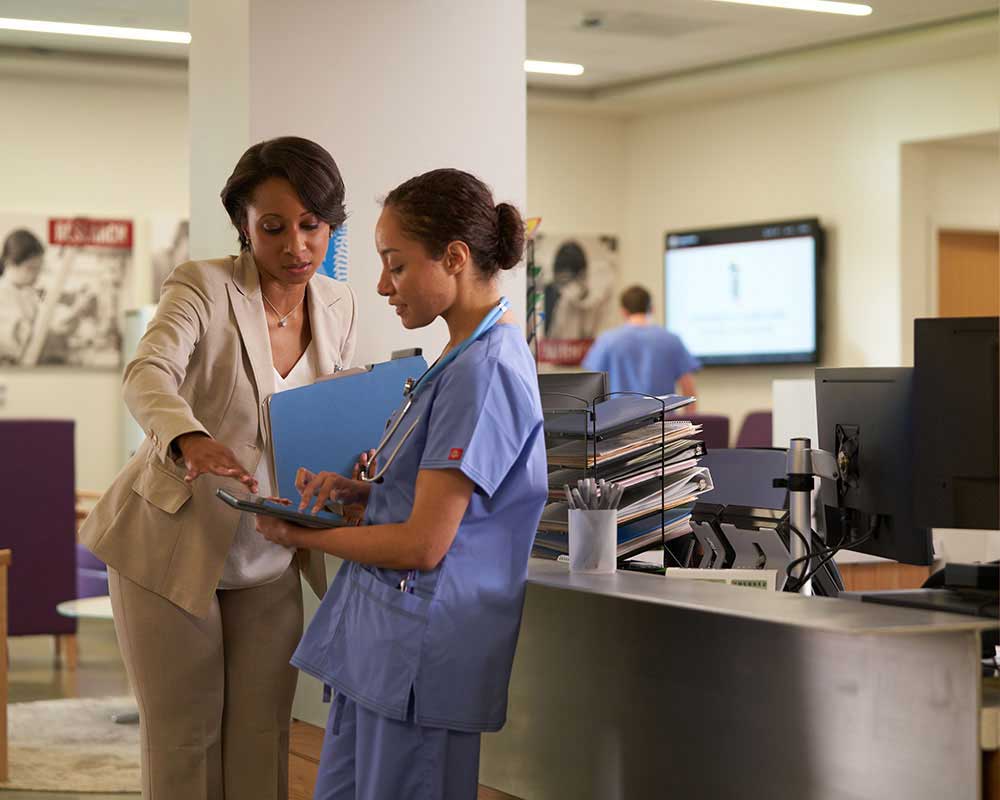How to Beginning a Successful Career in Medical Administration: A Newbie's Guide
How to Beginning a Successful Career in Medical Administration: A Newbie's Guide
Blog Article
Ideal Practices in Medical Management for Improving Effectiveness and Minimizing Costs
In the ever-evolving landscape of health care, the pursuit of finest practices in medical management is vital for enhancing effectiveness and suppressing expenditures. By incorporating advanced technologies such as digital wellness records and telemedicine, medical care service providers can simplify operations and boost client care.
Leveraging Advanced Modern Technology
The integration of electronic services into medical care systems has changed the means facilities operate, simplifying processes and improving person care. By centralizing patient details, EHRs get rid of the need for cumbersome documents and assist in seamless interaction among medical care service providers.
Telemedicine is one more technical development that has actually revolutionized person interaction. It uses convenience for both patients and health care professionals by enabling remote examinations, which can decrease the need for in-person sees and enhance appointment scheduling. Furthermore, telehealth platforms can expand health care accessibility to country or underserved areas, bridging voids in care delivery.
In addition, the use of Artificial Intelligence (AI) and artificial intelligence is ending up being progressively common in predictive analytics, enabling for early discovery of potential health concerns and more enlightened decision-making. These innovations, when incorporated efficiently, can boost analysis accuracy and personalize patient treatment strategies, eventually causing enhanced health care end results and operational effectiveness.
Optimizing Source Appropriation
By strategically handling resources such as personnel, devices, and financial resources, medical care facilities can dramatically boost their functional performance, boost client results, and reduce unneeded expenses. The initial action in optimizing source allotment involves carrying out a detailed analysis of current properties and identifying locations where resources might be underutilized or overextended.
Prioritizing resource appropriation based upon patient needs and service needs is necessary. This includes aligning resources with high-demand locations, such as emergency care or specialized treatments, to make sure timely and efficient person treatment. Implementing adaptable staffing designs can additionally maximize labor resources by adjusting personnel allocation in reaction to varying person volumes. Furthermore, embracing telemedicine and various other technological services can minimize physical source constraints by offering alternative opportunities for patient-provider communications.
Funds should be meticulously checked and alloted with critical insight to support both short-term functional demands and long-lasting institutional objectives. This includes investing in training programs that boost team competencies and adopting energy-efficient techniques that lower functional expenses (medical administration). Inevitably, an enhanced resource allotment method promotes a lasting healthcare setting that is receptive, efficient, and economically prudent
Streamlining Operations Procedures
When medical care centers goal to improve functional effectiveness, streamlining process processes comes to be a pivotal emphasis. Efficient workflows reduce redundancy, remove unneeded steps, and enhance control amongst health care experts. This method check these guys out not only increases solution delivery yet likewise enhances the top quality of patient treatment.

Next, technology integration plays a significant function in streamlining operations. Applying digital wellness documents (EHRs) and computerized physician order access (CPOE) systems decreases paperwork, minimizes human mistake, and guarantees info is available to all pertinent employees. In addition, leveraging telemedicine platforms can streamline individual assessments and follow-ups, decreasing the pressure on physical facilities.

Ultimately, streamlined workflows bring about set you back reductions and enhanced client fulfillment, promoting an extra lasting medical care atmosphere.
Enhancing Data Monitoring
Structure upon streamlined operations, enhancing data monitoring comes to be an essential element ahead of time health care management. Effective information management systems are essential for preserving precise client records, improving decision-making, and ensuring conformity with governing standards. By applying robust information management solutions, health care facilities can boost the top quality of individual care while simultaneously minimizing operational expenses.
One key element of boosting data administration is the assimilation of advanced electronic wellness record (EHR) systems. Web Site These systems assist in the seamless exchange of person info throughout various departments, reducing replication of examinations and reducing errors. A properly designed EHR system sustains data analytics, allowing doctor to identify fads and make notified decisions concerning individual care.
Furthermore, protecting client data is critical. Adopting detailed cybersecurity measures, including file encryption and regular audits, ensures the integrity and confidentiality of delicate details. This not just secures clients yet additionally maintains the organization's track record.
Purchasing staff training is one more crucial aspect. Enlightening medical care specialists on information administration practices you could check here improves their capability to properly make use of technology, bring about improved individual end results. In final thought, boosting information monitoring through advanced technology and thorough training is essential for achieving efficiency and expense reduction in clinical administration.
Fostering Collaborative Communication
A critical part in progressing clinical administration is promoting collective interaction amongst healthcare specialists. Efficient interaction is vital for making certain smooth client treatment, maximizing treatment results, and lessening errors. By encouraging open dialogue and sychronisation throughout multidisciplinary teams, medical care organizations can boost their functional efficiency and lower unnecessary expenses.
Central to this strategy is the combination of interaction modern technologies such as electronic health documents (EHRs) and protected messaging systems, which facilitate the quick exchange of critical patient info. These devices make it possible for doctor to access and share data in actual time, guaranteeing that all team members are educated and lined up in their decision-making processes. Furthermore, regular team meetings and interdisciplinary rounds can further promote a society of collaboration and accountability.
Educating programs focused on enhancing interaction skills are additionally vital. Ultimately, promoting collaborative communication leads to boosted medical care distribution and price financial savings.

Final Thought
Integrating advanced innovation, such as electronic wellness records and telemedicine, alongside enhanced resource allowance and streamlined operations processes, is crucial for enhancing effectiveness in clinical management. Reliable data monitoring and cultivating collaborative interaction among healthcare groups are critical for decreasing redundancies and improving treatment top quality. By prioritizing preventive care and involving in top quality improvement initiatives, health care companies can accomplish substantial expense savings and enhanced client outcomes, therefore guaranteeing sustainable healthcare delivery in a progressively intricate setting.
Report this page